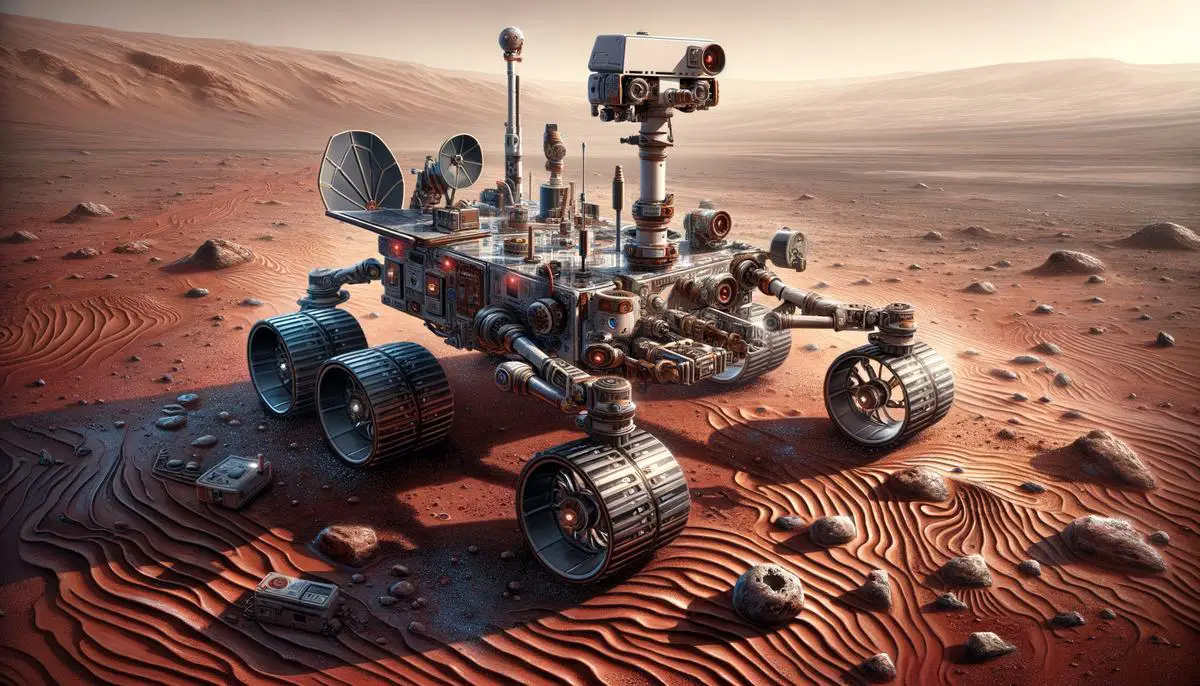The mission of NASA’s Curiosity Rover has embarked upon a remarkable endeavor to unravel the secrets of Mars, shedding light on its environmental history and its past habitability. Through the lens of geological analysis and atmospheric studies, we delve into the Red Planet, gathering evidence that may answer humankind’s most profound question: has Mars ever been a home to life? This exploration, powered by cutting-edge technology and driven by human curiosity, represents a leap towards understanding not just Mars, but the possibility of life beyond Earth.
Geological Analysis and Ancient Habitability
Curiosity Rover’s Geological Examination and Insights into Mars’ Past
Introduction
Curiosity, NASA’s Mars rover, has embarked on a mission shedding light on Mars’ environmental history, specifically focusing on its past habitability. Its geological analysis, primarily through the study of rock and soil samples, has catapulted our understanding of the Red Planet’s past conditions, revealing elements that point towards the possibility of Mars hosting life beyond Earth. This examination is pivotal in piecing together Mars’ environmental narrative, highlighting the presence of water, essential minerals, and the potential for a habitable environment.
Water: The Crux of Habitability
The quest for water on Mars has been central to understanding its habitability. Curiosity’s drills have collected samples indicating that ancient Mars boasted conditions suitable for water – a critical ingredient for life. For instance, the rover’s analysis of rock textures suggests the historical presence of streams and lakes. Such environments could have supported microbial life, mirroring early Earth conditions. The discovery of sedimentary rocks, formed in water, further confirms that liquid water, once abundant, played a significant role in Mars’ geological history.
Minerals and Chemicals: Building Blocks of Life
Curiosity has also detected a variety of minerals on Mars that are crucial for life. Clay minerals, for example, suggest a neutral pH water environment in the past, conducive to life. Moreover, the presence of sulfur, nitrogen, hydrogen, oxygen, phosphorus, and carbon (key elements for life as we know it) in rock samples provides compelling evidence of a once habitable environment. These findings indicate that Mars had the essential ingredients needed to support life processes.
Environmental Conditions: A Glimpse into Mars’ Climate
Beyond the presence of water and life-sustaining minerals, Curiosity has revealed insights into the Red Planet’s climate. The rover’s data points towards significant environmental shifts over billions of years, transitioning from a warmer and wetter climate to the cold, arid conditions observed today. These climatic changes are crucial in understanding Mars’ capacity to support life over its geological history. The detection of methane spikes, potentially indicative of biological activity, further fuels the debate about the existence of life on Mars, though non-biological processes could also account for these observations.
Autonomous Exploration: Leveraging Technology for Discovery
Curiosity’s ability to autonomously navigate Mars’ terrain and select rock targets for study exemplifies the convergence of robotics, artificial intelligence (AI), and planetary science. This autonomous exploration has maximized the rover’s scientific output, allowing for a more detailed understanding of Mars’ geological and environmental history. The rover’s suite of scientific instruments, working in tandem, has transformed our approach to exploring celestial bodies, promising a new era of discovery in the search for extraterrestrial life.
In the face of harsh Martian conditions, Curiosity’s journey has been a testament to human ingenuity and curiosity. As it continues to traverse the Gale Crater, the rover’s findings contribute to a growing body of evidence suggesting Mars’ past habitability. Each rock sample and soil analysis brings us one step closer to answering the age-old question: was Mars ever home to life? Curiosity’s mission, at its heart, is a quest to expand our understanding of the universe, demonstrating the potential for life beyond our planet and the dynamic environmental processes that shape celestial bodies. Through the lens of geological analysis, we inch closer to unveiling Mars’ mysteries, paving the way for future missions and the continued exploration of our solar system.
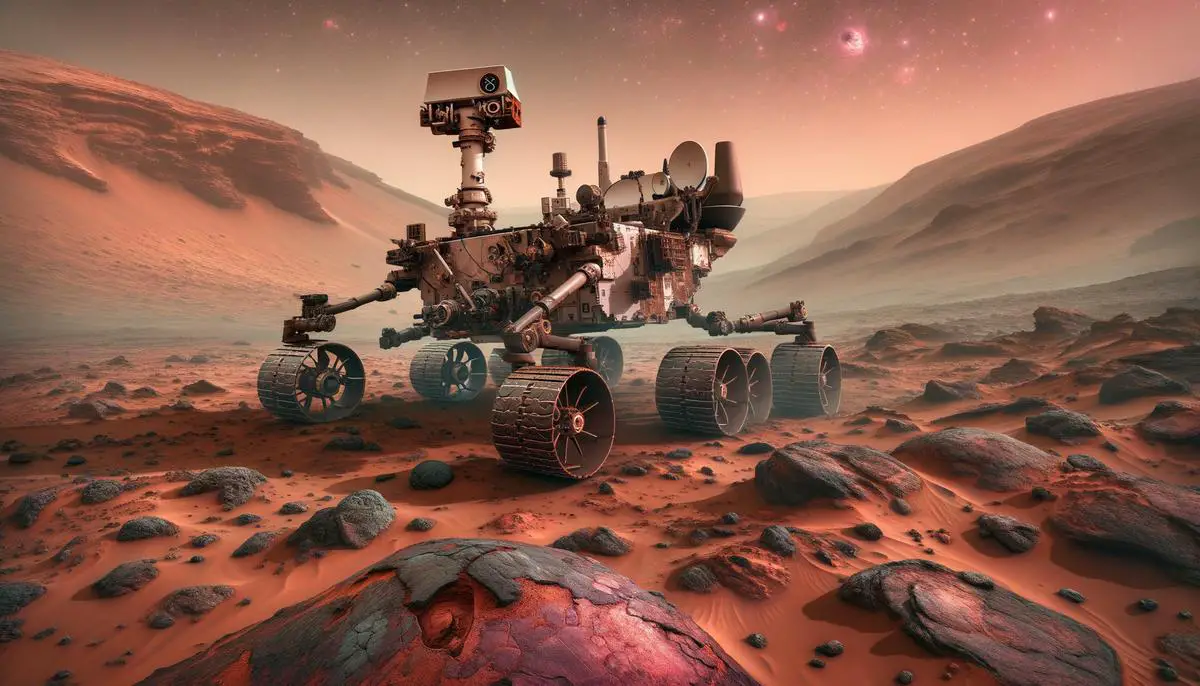
Atmospheric Studies and Climate Insights
Curiosity’s atmospheric studies have shed light on Mars’ complex climate history and its current environmental state, unveiling a world that has experienced significant changes over millions of years. Through meticulous examination of the Martian atmosphere, the rover has provided critical data that contribute to our comprehensive understanding of the planet’s past, present, and potential habitability.
One of the primary focuses of Curiosity’s atmospheric studies has been the analysis of gas concentrations, particularly methane, carbon dioxide, and water vapor. The fluctuating levels of methane detected by Curiosity have sparked interest among scientists, as on Earth, methane is often produced by biological processes. The seasonal variations in methane concentration suggest dynamic processes at work, possibly hinting at microbial life or geochemical reactions beneath the Martian surface.
Curiosity has also measured other atmospheric components, such as the ratio of isotopes in gases. Isotopes are atoms of the same element with different numbers of neutrons. By studying the isotopic composition of the Martian atmosphere, especially that of carbon dioxide, researchers have gained insights into the planet’s atmospheric loss to space. This information is crucial for understanding how Mars transitioned from a warmer, wetter world capable of supporting life, to the cold, arid planet we see today.
The rover’s findings regarding atmospheric thinning demonstrate how solar wind and radiation have stripped Mars of its once thicker atmosphere. This process, known as atmospheric escape, has had profound implications for Mars’ climate and its ability to sustain liquid water on its surface. Curiosity’s measurements have helped quantify the rate of atmospheric loss and refine models of the planet’s climate evolution.
Beyond atmospheric composition, Curiosity’s weather monitoring instruments have recorded temperature fluctuations, dust devils, and seasonal changes, offering a detailed picture of Martian weather patterns. These observations help scientists understand the present-day Martian climate, including wind patterns and temperature shifts, which are crucial for future exploration and potential human missions to Mars.
Furthermore, Curiosity’s atmospheric studies contribute to the debate on Mars’ present habitability. By examining environmental conditions, such as UV radiation levels and temperature variations, scientists can assess the viability of microbial life surviving on or near the Martian surface. These atmospheric and climatic insights are essential for identifying regions of Mars that could have once harbored life or could be conducive to life in the future.
In conclusion, the Curiosity Rover’s atmospheric studies have been instrumental in piecing together Mars’ climatic history and assessing its current state. By probing the composition, dynamics, and evolution of the Martian atmosphere, Curiosity has highlighted the planet’s complexity and added crucial chapters to the story of Mars. These findings not only deepen our understanding of Mars but also inform our search for life beyond Earth and prepare us for the next steps in Martian exploration.
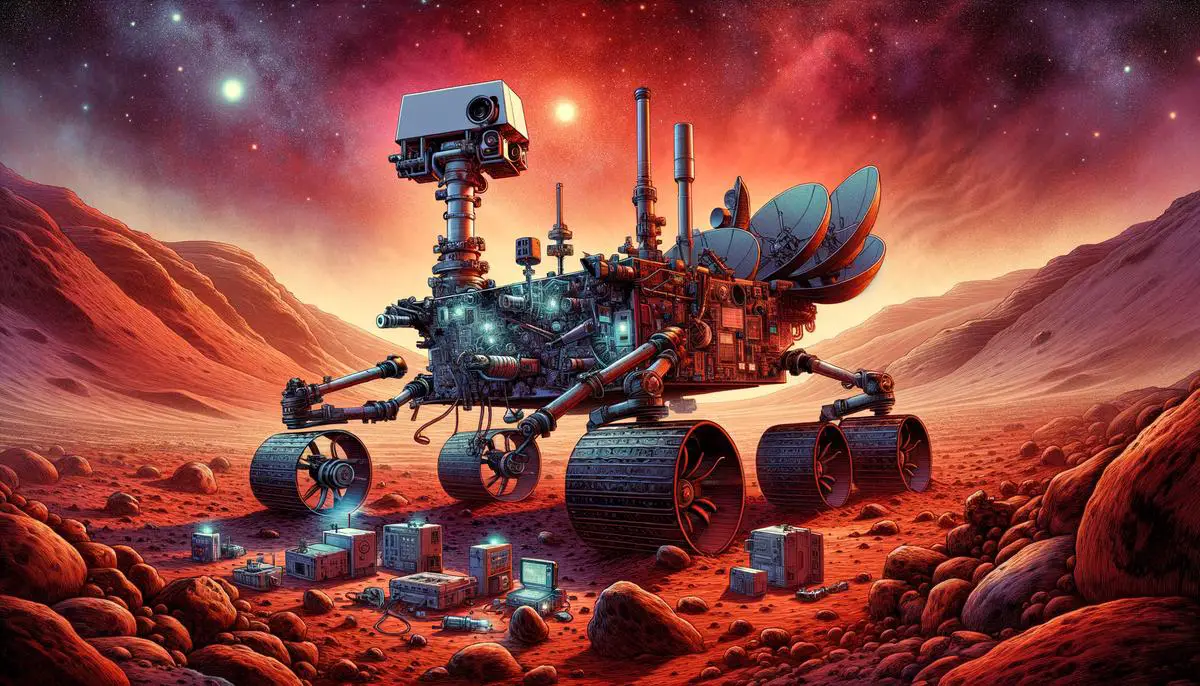
Discovery of Organic Molecules
In June 2018, a thrilling announcement captured the world’s attention: NASA’s Curiosity Rover had uncovered traces of organic molecules on Mars. This groundbreaking discovery has since ignited conversations and speculations about the Red Planet’s potential past or even present life. But what exactly does this find mean, and why is it creating such a buzz? Let’s dive into the heart of the matter.
Organic molecules are compounds that typically contain carbon, along with hydrogen, oxygen, nitrogen, and other elements. On Earth, these molecules are fundamental building blocks of all known forms of life. However, it’s important to note that organic molecules can also be created through non-biological processes. The presence of these molecules on Mars raises intriguing questions about the planet’s environment and its capacity to support life.
The organic molecules were discovered in rock samples collected by Curiosity’s drill at the Gale Crater, an ancient lakebed. This region of Mars is of particular interest because it’s thought to have had conditions suitable for life billions of years ago. The molecules discovered include a variety of compounds, such as thiophenes, benzene, toluene, and small alkanes. Scientists believe these compounds might have formed from ancient sources, like water-rock interactions or by the decay of once-living organisms.
This find is significant for several reasons. Firstly, it provides substantial evidence supporting the theory that Mars had habitable conditions in its past. The organic molecules found in Gale Crater suggest that the basic ingredients for life were present. However, the presence of these molecules alone doesn’t confirm that life ever existed on Mars. It does, however, open the door to that possibility and provides a critical piece of the puzzle in our understanding of the planet’s past environment.
Moreover, the discovery sheds light on the preservation of organic materials on Mars. The fact that these molecules have been preserved for billions of years in Martian rock is quite remarkable and poses questions about the processes that allowed for their preservation. This information is crucial for scientists as it helps refine the search for evidence of life on Mars. By understanding how organic compounds are preserved, scientists can identify the most promising sites to search for additional signs of past or present life.
Furthermore, the discovery of organic molecules on Mars has broader implications for astrobiology and the search for life beyond Earth. It suggests that organic chemistry, a precursor to life, is not unique to Earth. This expands our understanding of the possibilities for life to exist elsewhere in the universe. As we explore other planets, moons, and celestial bodies, the findings from Mars serve as a guide, indicating what we should look for when searching for signs of life.
In light of this discovery, future missions to Mars are being planned with a renewed focus on finding life. Rovers and landers equipped with advanced technology will continue to explore the Martian surface, drilling deeper and investigating new regions that could hold further clues about the planet’s potential to support life. The European Space Agency’s ExoMars rover and NASA’s Mars 2020 rover are examples of upcoming missions aimed at continuing this quest. These missions will carry sophisticated instruments capable of detecting a wider range of organic compounds and signs of past life, taking us even closer to answering the age-old question: Are we alone in the universe?
In conclusion, the detection of organic molecules on Mars by NASA’s Curiosity Rover has profound implications for our understanding of Mars, the possibilities for life beyond Earth, and the future of space exploration. While it doesn’t directly indicate the existence of past life on Mars, it significantly enhances the argument that Mars once had conditions suitable for life and potentially even hosted life forms. This discovery fuels our curiosity and drives forward the pursuit of knowledge about our place in the cosmos. The journey of exploration continues, with each finding bringing us one step closer to unraveling the mysteries of our universe.
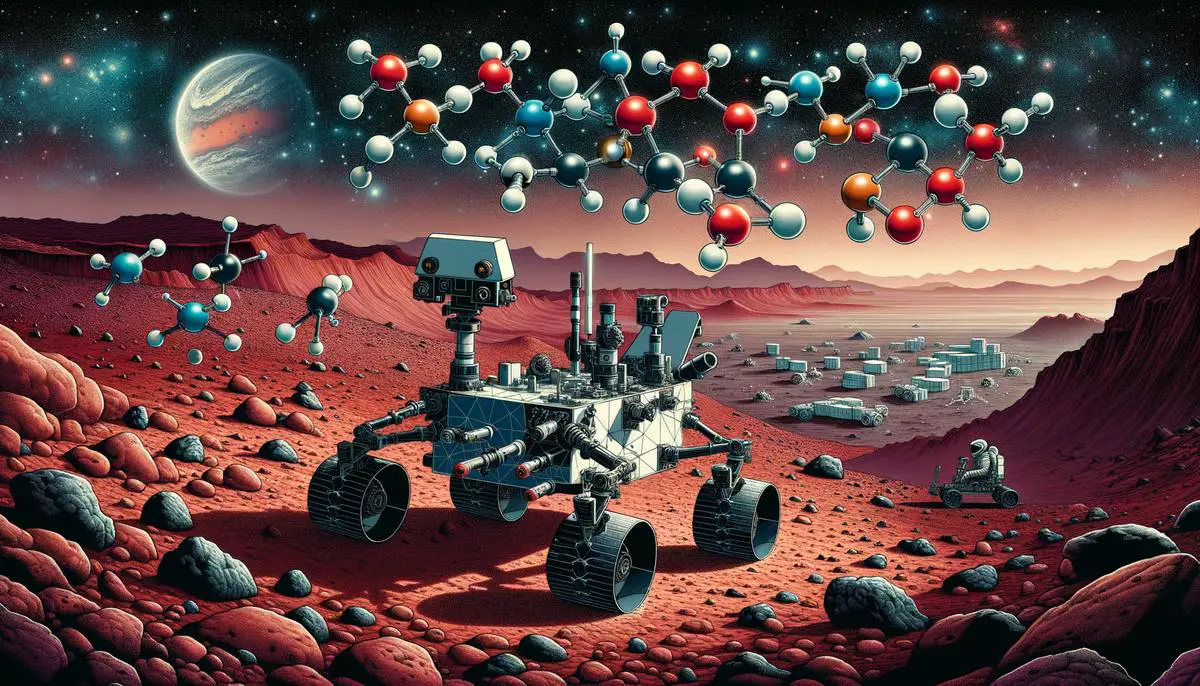
Technological Innovations and Challenges
Building on the groundbreaking work of NASA’s Curiosity Rover on Mars, a significant technological leap has been the rover’s advanced analytical instruments, which have played a critical role in making these discoveries possible. Among them, the Sample Analysis at Mars (SAM) and the Chemistry and Mineralogy (CheMin) instruments have been pivotal. These sophisticated tools have allowed scientists to conduct complex chemical analyses of Martian soil, rocks, and atmosphere, directly on the planet’s surface.
Technological Advancements in Analytical Instruments
The SAM instrument suite, for example, is a portable laboratory capable of identifying a wide range of chemical compounds and conducting precise isotope analysis. This capability has been crucial in detecting the various organic molecules mentioned previously. Furthermore, SAM’s ability to heat Martian samples enables the identification of gases released, which are then analyzed to identify the presence of organic compounds. This process was instrumental in discovering seasonal variations in methane levels, which hinted at the potential metabolic activity, possibly microorganisms, on Mars.
Similarly, the CheMin instrument has been indispensable in determining the mineralogical composition of Martian soil and rock samples. By providing detailed information about mineral structures, CheMin has helped scientists deduce the planet’s geological history, including the confirmation that Mars had environments with conditions suitable for life.
Overcoming Challenges of Remote Analysis
Operating these complex instruments on Mars presented various challenges, primarily related to power limitations, the harsh Martian environment, and the need for autonomous operation. Power limitations meant that instruments had to be extremely efficient, both in terms of energy consumption and in conducting analyses. The harsh Martian environment, including temperature extremes and dust, required robust systems that could continue to operate reliably. Finally, given the communication delay between Earth and Mars, these instruments needed to function semi-autonomously, prioritizing tasks and conducting analyses with minimal input from Earth.
Adaptive Software and AI Integration
The integration of artificial intelligence (AI) and adaptive software has been a significant technological advancement in addressing these challenges. AI has allowed the Curiosity Rover to make “decisions” on the spot regarding navigation, target selection for analysis, and even initial data analysis. This capability has maximized the efficiency of the mission’s scientific output, allowing Curiosity to focus on the most promising scientific targets without waiting for instructions from Earth.
Moreover, the development of algorithms capable of handling unexpected situations has provided a level of autonomy necessary for the success of such a remote mission. These algorithms have allowed Curiosity to adjust its plans in response to new data or environmental conditions, further enhancing the mission’s adaptability and resilience.
Impact on Future Missions
The technological advancements and solutions developed for the Curiosity Rover have set the stage for future Mars missions. The upcoming Mars 2020 Perseverance Rover, for instance, builds upon Curiosity’s technological legacy. It is equipped with improved versions of the analytical instruments found on Curiosity, along with a range of new tools designed to collect rock and soil samples for potential return to Earth.
The lessons learned from Curiosity’s mission, particularly in instrument design, autonomy, and the integration of AI, are informing the development of future missions to Mars and beyond. These advancements ensure that as we continue to explore our solar system, we will do so with increasingly sophisticated and capable robotic explorers, paving the way for deeper understanding and potentially groundbreaking discoveries on Mars and other celestial bodies.
In conclusion, the mission of NASA’s Curiosity Rover has not only expanded our knowledge of Mars but has also driven technological innovation in space exploration. By overcoming significant challenges and harnessing new technologies, Curiosity has laid the groundwork for the next generation of missions, taking us one step closer to answering the age-old question: Are we alone in the universe?
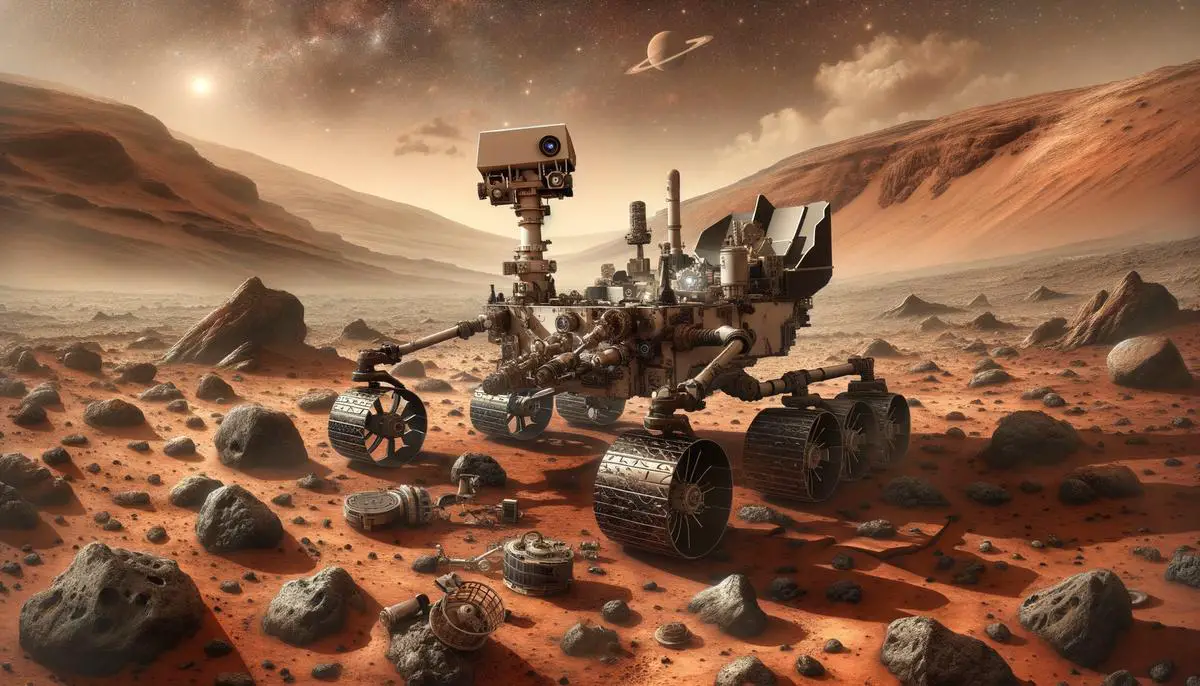
Impact on Future Mars Exploration Missions
The journey of NASA’s Curiosity Rover on Mars has irrevocably altered the trajectory of future space exploration, carving a path laden with intriguing possibilities and enlightening insights. It’s like Curiosity has handed us a map, highlighting newfound terrains laden with secrets about Mars’ ancient past and possibly its future. At the heart of these explorations lie the technological marvels aboard Curiosity, which include the Sample Analysis at Mars (SAM) and Chemistry and Mineralogy (CheMin) instruments. These sophisticated tools have not only unveiled Mars’ chemical compositions but have also set a precedent for what technological ingenuity can achieve millions of miles away from Earth.
Importantly, Curiosity’s mission has demonstrated the crucial role of autonomy and AI in exploring celestial bodies. Operating in an environment where every command takes minutes to reach and even longer to execute, the rover’s autonomous capabilities have ensured that it can make decisions on the fly. This self-sufficiency has been crucial in navigating Mars’ terrain, selecting study sites, and conducting experiments efficiently. The success in integrating AI and autonomy into Curiosity’s mission serves as a blueprint for upcoming missions, suggesting that future rovers and even crewed missions might rely heavily on these technologies for exploration and survival on alien planets.
One significant advancement heralded by Curiosity is in the realm of instrument design. Both SAM and CheMin have laid the groundwork for the sophisticated tools aboard the Mars 2020 Perseverance Rover. They provide a deeper understanding of the challenges involved in designing instruments capable of withstanding Mars’ harsh environment. These challenges include not only the extreme temperatures and dust storms but also the limited power availability that dictates the operational capabilities of these instruments. The lessons learned from SAM and CheMin are being applied to the design of new instruments that are more efficient, resilient, and capable of autonomous operation, thus ensuring that future missions can carry out their objectives with increased reliability and precision.
Furthermore, the integration of AI into these instruments has opened up new vistas for space exploration. The adaptive software allows these tools to analyze data in real-time, make immediate adjustments to their operations, and even prioritize scientific goals autonomously. This level of sophistication in AI applications broadens the horizon for what can be achieved in terms of space exploration, making it possible to uncover secrets of the cosmos at an unprecedented pace.
As we stand on the brink of future missions to Mars and beyond, the contributions of Curiosity’s technological advancements cannot be overstated. The rover not only provided us with a treasure trove of scientific data but also revolutionized the way we approach the design and operation of instruments in space. The integration of AI and autonomy, coupled with the lessons learned from managing the challenges of remote operation, are shaping the foundation of future space exploration missions. They signal a future where missions are more autonomous, efficient, and capable of unveiling the mysteries of the cosmos in ways we can barely imagine today.
In essence, Curiosity has not just traversed the Martian landscape; it has charted a course for the future of space exploration. Its mission highlights the importance of technological innovation and adaptability, providing a template for future endeavors to replicate and build upon. As we look to the stars with anticipation for the next chapter in space exploration, Curiosity’s legacy serves as both a beacon and a challenge, urging us to push the boundaries of what is possible.
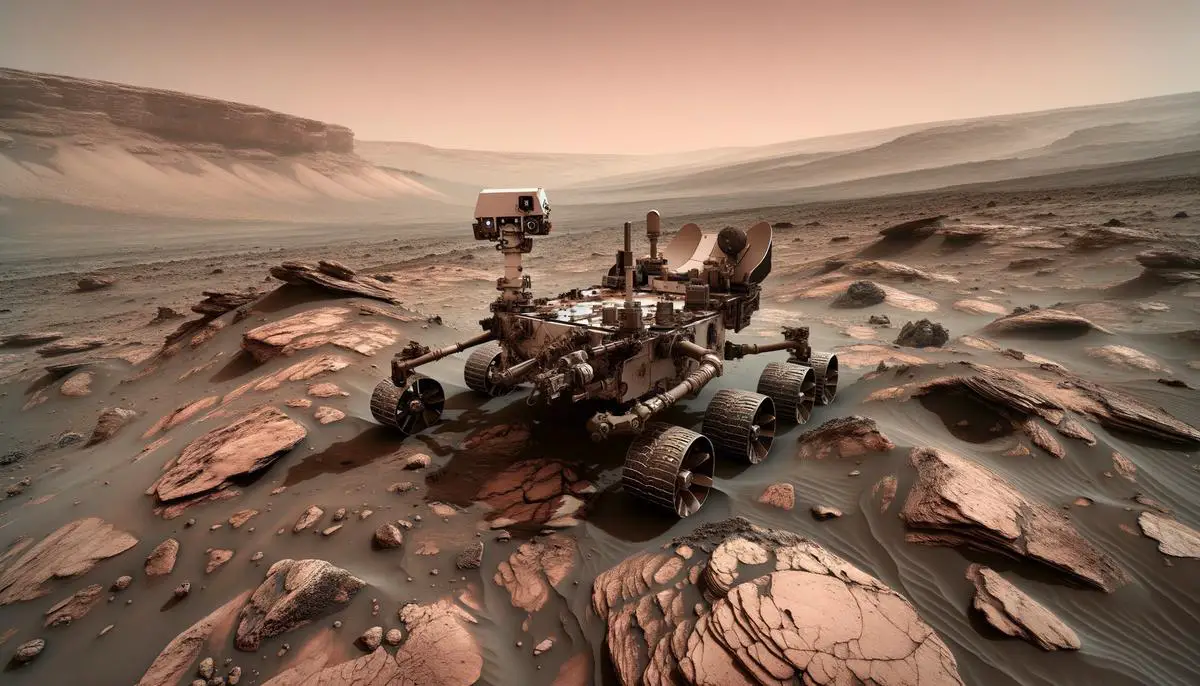
Through the eyes of the Curiosity Rover, we have ventured across Mars, uncovering clues hidden within its rocks, atmosphere, and dust. Each discovery offers a piece of the puzzle, hinting at a past where water flowed, climates changed, and the ingredients for life were present. As we piece together these clues, the implications extend far beyond Mars, suggesting new possibilities in our quest to understand the cosmos. Curiosity’s trek across the Martian landscape is more than a mission; it’s a reflection of our desire to explore, discover, and understand the unknown, propelling us forward into the next era of space exploration.
![]()
